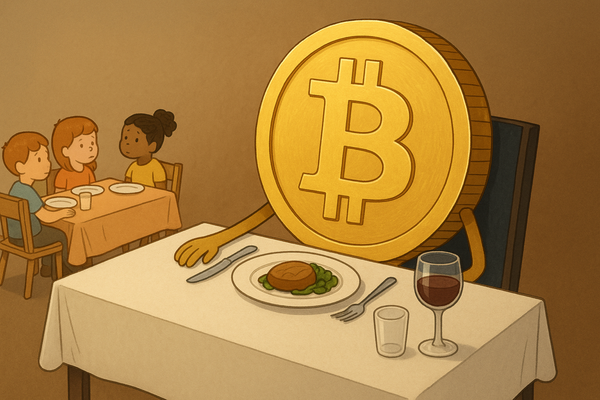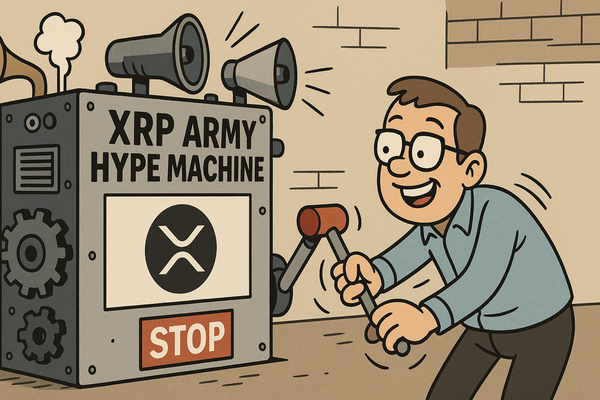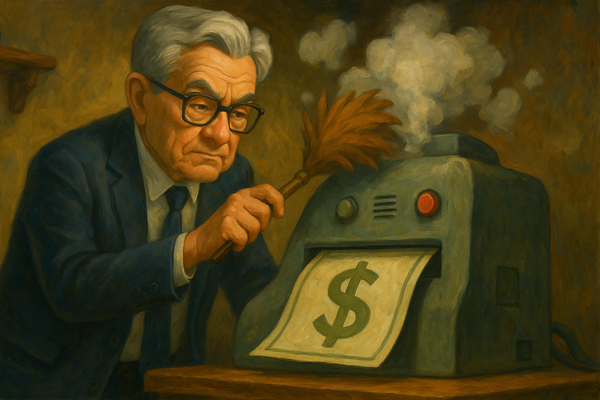The Future will Be Tokenized (And Why That's Awesome)
"The greatest promise of tokenization isn't in creating new assets but in unlocking the dormant potential of the ones we already have."

Ever had that moment where you're looking at your investment portfolio, and suddenly it hits you—why can't I just sell 12% of my vacation home to pay for my kid's braces? Or why is it that I can invest $10,000 in Apple but need $2 million to get into a decent commercial real estate deal? If you've wondered about these things, you're already thinking about tokenization without realizing it.
The World Is Still Running on Financial Technology From 1952
Here's something that might surprise you: most of our financial infrastructure is dinosaur-old. When you buy stocks, the actual settlement still takes T+2 days (that's trade date plus two business days). That's not because computers can't handle it faster—it's because the system was designed when people physically carried stock certificates across Manhattan.
Meanwhile, that investment property you own? It's represented by a piece of paper in a county clerk's office somewhere. Not exactly cutting edge.
What Tokenization Actually Means (Hint: It's Not Just About Crypto)
When people talk about "the future being tokenized," they're not just referring to crypto tokens like Bitcoin or Ethereum. They're talking about something much more fundamental: representing ownership of any asset as digital tokens on a blockchain.
Think of it this way: a token is just a digital receipt of ownership that can't be forged, can be instantly transferred, and can represent any fraction of the underlying asset.
Some examples that are already happening:
- RealT has tokenized over $35 million worth of residential real estate, allowing people to invest with as little as $50
- The first tokenized securities transactions settled in 6.5 seconds vs. the traditional 2 days
- In 2022, a Picasso painting worth $3.5 million was fractionally tokenized and sold to 5,000 different owners
The Three Waves of Tokenization That Are Coming
Wave 1: Liquidity for the Illiquid (2023-2025)
The first major transformation is already happening—taking traditionally illiquid assets and making them tradable. Commercial real estate is the perfect example. A $50 million office building might be carved into 50 million tokens worth $1 each. This isn't just theoretical—Elevated Returns tokenized the St. Regis Aspen Resort, raising $18 million in the first 24 hours.
Wave 2: The Asset Remix (2025-2028)
The second wave will be about creating entirely new asset classes by mixing tokens. Imagine a "San Francisco Real Estate Index Token" that gives you exposure to residential and commercial properties across the city, or an "AI Computing Token" that represents ownership in data centers powering machine learning across three continents.
Wave 3: Programmable Ownership (2028+)
The final wave is the most fascinating. Assets will have rules built into them. Your tokenized car could automatically restrict its use if maintenance payments are missed. A commercial property could automatically distribute rental income to thousands of token holders every day rather than quarterly.
The Liquidity Premium: Where the Money Actually Is
Here's a counterintuitive insight that most people miss: when an illiquid asset becomes liquid, its value typically increases by 20-30%. This is called the "liquidity premium."
For example:
- Private company shares typically trade at a 20-35% discount to their public market equivalents
- Limited partnership interests in private equity funds often sell on secondary markets at 15-25% discounts
When tokenization makes these assets instantly tradable, that discount disappears—creating massive value without any change to the underlying asset.
Smart Contract Platforms: The Operating Systems of the Tokenized Future
As tokenization accelerates, there's a crucial infrastructure play most investors are overlooking: smart contract platforms and their native tokens (like ETH, SOL, and ADA).
Think of these platforms as the operating systems upon which the entire tokenized economy runs. Every tokenized house, fractional painting, or business ownership share exists as a smart contract on these networks. And here's the kicker—each transaction requires the platform's native token to execute.
Here's the investment insight: as more real-world assets move on-chain, these platforms capture value in three powerful ways:
- Gas Fees: Every transaction requires the native token to pay for computation
- Security Staking: Many platforms now require tokens to be locked up to secure the network
- Store of Value: As utility increases, these tokens become necessary reserves for businesses operating in the tokenized economy
The math is compelling: when ethereum processed just NFT trades in 2021, ETH reached a $500 billion market cap. Now imagine tokenizing the $300 trillion of real-world assets globally. The platforms processing these transactions would need to support that economic activity, driving massive demand for their native tokens.
Essentially, these smart contract tokens are like investing in Microsoft in 1990—the essential software layer positioned to capture value from every application built above it, regardless of which specific assets end up being tokenized first.
Think of It Like This: From Record Stores to Spotify
Remember record stores? If you wanted one song, you had to buy the whole album. Then came MP3s, which let you buy individual songs. Now with Spotify, you don't even need to buy music—you can access nearly any song ever recorded instantly.
Tokenization is doing the same thing to ownership that digital streaming did to music. It's breaking down assets into their smallest useful units, making them instantly transferable, and creating entirely new ways to combine them.
The Bottom Line
The future isn't just tokenized—it's already happening. While the media focuses on crypto price fluctuations, the real revolution is in the infrastructure being built. Twenty years from now, you'll look back and wonder how we ever lived in a world where you couldn't trade or collateralize any asset instantly, from anywhere, at minimal cost.
And that future might be closer than you think. The question isn't whether assets will be tokenized—it's whether you'll be positioning yourself to benefit from the transformation now, or playing catch-up later.
WANT TO LEARN MORE? LET'S TALK!
I manage a private crypto fund that works with accredited and institutional investors. If you’re considering exposure for your portfolio, looking to learn more, or exploring strategic partnerships as an allocator or advisor, I'd love to connect!
🚀 Send me an email or a message on LinkedIn.
Disclaimer: The information provided in this blog is for informational and educational purposes only and should not be considered financial, investment, or legal advice. Do your own research and consult a professional—your money, your responsibility.




